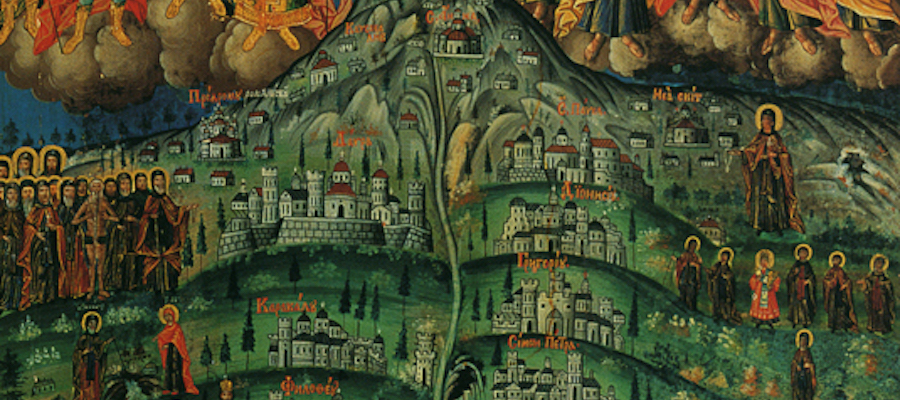This lecture contextualizes the emergence of a unique “Athonite” or “Hagiorite” identity on Mount Athos over the course of the Middle Ages. In Late Antiquity most Byzantine authors identified sacred mountains through the lens of biblical history, especially the mountains associated with the life of Jesus (Mount of Olives, Mount Tabor) or the Prophet Moses (Mount Nebo, Mount Sinai). By the time of the emergence of communal monasticism on Mount Athos in the middle of the tenth century, Athos could be counted as one of several “Holy Mountains” that housed monastic confederations within the Byzantine Empire, most of which were in western Asia Minor. Yet by the end of the medieval period, the term “Holy Mountain” had strong associations with Athos.
The rich documentation of medieval Mount Athos allows the mapping of the development of a “Hagiorite” identity in a variety of different contexts. In this lecture, three strands of Athonite identity will be explored: 1) in a legal sense, with Mount Athos as a circumscribed monastic space with specific rights and privileges; 2) as a literary construct, as a place of longing and desire; 3) as a landmark within the sacred geography of the Orthodox world.
This lecture will take place live on Zoom, followed by a question and answer period. Please register to receive the Zoom link.
